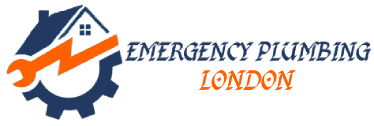How to clean drain pipes in your home
![water tank repair [626x417]](https://emergencyplumbing.london/wp-content/uploads/2019/07/water-tank-repair2-min-300x200.jpg) Clogged drains are known to occur at the most inopportune times. Often when you have guests over or are planning an event at home!
Clogged drains are known to occur at the most inopportune times. Often when you have guests over or are planning an event at home!
Clogged drains in your home are an absolute nightmare, not to mention time-consuming and expensive.
What you can do for preventive drain maintenance
Kitchen drains: always throw leftovers in the trash. The only thing that should go down your drain pipe is water and dish soap. That’s it. Any leftover utensils should be wiped off with the help of a paper towel and thrown in the trash can.
Once a week
Kitchen & Bathroom Sinks: There are pop-up plugs in kitchen and bathroom sinks. We advise you to take these plugs out and remove any debris that may be present. Then wash them thoroughly and put the plug back on the drain.
Shower and bathtub drains: Remove any debris immediately present in your drain by cleaning the pipe with a bent wire.
Once a month
Clean the garbage disposal: a disposal brush can be used to clean the debris that has accumulated in the garbage disposal. Also, you can crush some ice and add it to the garbage disposal along with some table salt to remove the grease and slime from the disposer.
Bathtub drain maintenance: for a bathtub, reach the spring arm after lifting the pop-up. Clean the tub of any debris present, rinse thoroughly and replace.
Non-chemical drain cleaning: we recommend that you use a natural drain cleaner once a month to maintain all the pipes present in the house. You can even use a bacteriological drain cleaner for regular cleaning. Just be sure to stay away from more caustic chemical cleaners. Harsh chemicals can do more harm than good.
Techniques for cleaning drains without professional help include the following:
Use a plunger: A simple occasional clog can be cleared with the help of a plunger. A plunger is a simple and clean tool compared to many others on the market.
To unclog a pipe with a plunger, it is very important to use this tool correctly. Place the rubber head against the drain, creating a seal so that no air can pass through. Then push the plunger until its head is turned upside down. Once the head is inverted, stop the pushing motion and allow the head to spring back to its original position.
You will need to repeat the entire process 5-6 times before you notice the water draining. This is best for toilet clogs, but can also be used for kitchen and bathroom drains.
Snake drain auger: If a plunger doesn’t get the job done, there is another tool you can opt for. An auger can reach further down into clogged pipes to clear them of blockages.
To use a snake drain, you must first remove any existing screens that are preventing access to your drain. Then, insert the snake drain into the drain pipe by turning it clockwise and pushing it further in. Your grip should be no more than 6 cm from the drain, as you may feel the clog if your grip is tight. When you reach the problem area, you will encounter some resistance from inside the drain pipe.
The Emergency Plumbing in London is 24 hours available. If you can’t handle this by yourself, then make us a call. After your call, our Customer Service sends the right plumber to you to fix the plumbing issue. Don’t hesitate to contact us, 02038079306.
